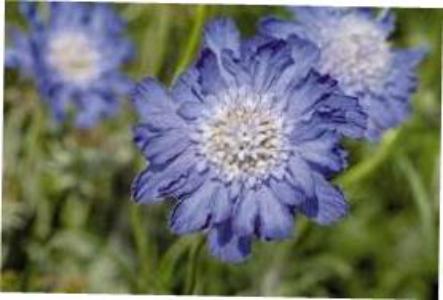Knautia
(Knautia)

Description
Knautia plants are members of the Dipsacaceae family, which is a group of flowering plants that includes around 350 species. Knautia plants are herbaceous perennials that are native to Europe and Asia. These plants have a unique flower structure that makes them quite distinctive from other plants in their family. In this article, we will explore the different types of Knautia plants, their growth habits, and how to care for them. Types of Knautia Plants: There are around 50 species of Knautia plants, but the most common ones are Knautia arvensis and Knautia macedonica. Knautia arvensis, also known as field scabious, is a native wildflower of Europe and is commonly found in meadows and pastures. It has small, lavender-blue flowers that bloom from June to September. Knautia macedonica, also known as Macedonian scabious, is a native of southeastern Europe and western Asia. This plant is a popular garden species due to its large, crimson-red flowers that bloom from June to August. Other popular species of Knautia plants include Knautia dipsacifolia, Knautia maxima, Knautia integrifolia, and Knautia taurica. Growth Habits of Knautia Plants: Knautia plants are herbaceous perennials that grow to a height of 60-90 cm. They have a clump-forming growth habit and produce upright stems that are branched near the top. The leaves of Knautia plants are lance-shaped and have a rough texture. They are arranged in a rosette at the base of the plant and along the stems. Knautia plants are prolific bloomers and produce large quantities of flowers from early summer to fall. The flowers are produced in clusters at the ends of the stems and have a distinctive pincushion-like shape. They are surrounded by a collar of papery bracts that protect the flower bud before it opens. The flowers of Knautia plants are attractive to bees, butterflies, and other pollinators. After the flowers are pollinated, they produce seed heads that resemble small balls. These seed heads can be left on the plant for winter interest or collected for propagation. How to Care for Knautia Plants: Knautia plants are easy to care for and make a great addition to any garden. They prefer full sun to partial shade and well-draining soil that is rich in organic matter. These plants are drought-tolerant once established and do not require regular watering. Knautia plants benefit from deadheading, which is the removal of spent flowers. This encourages the plant to produce more flowers and prevents it from self-seeding. If you want to collect seeds, however, leave a few seed heads on the plant. In the fall, cut back the stems of Knautia plants to the ground. This will help the plant prepare for winter and promote healthy growth in the spring. Propagation of Knautia Plants: Knautia plants can be propagated from seed or by division. To propagate Knautia plants from seed, collect the seed heads in the fall and store them in a cool, dry place until spring. In the spring, sow the seeds in trays of compost and water well. Keep the trays in a warm, sunny place and transplant the seedlings into individual pots when they are large enough to handle. To propagate Knautia plants by division, lift the plant in the spring and divide it into several clumps. Replant the clumps in well-prepared soil and water well. Keep the plants well-watered until they are established.
Taxonomic tree:







